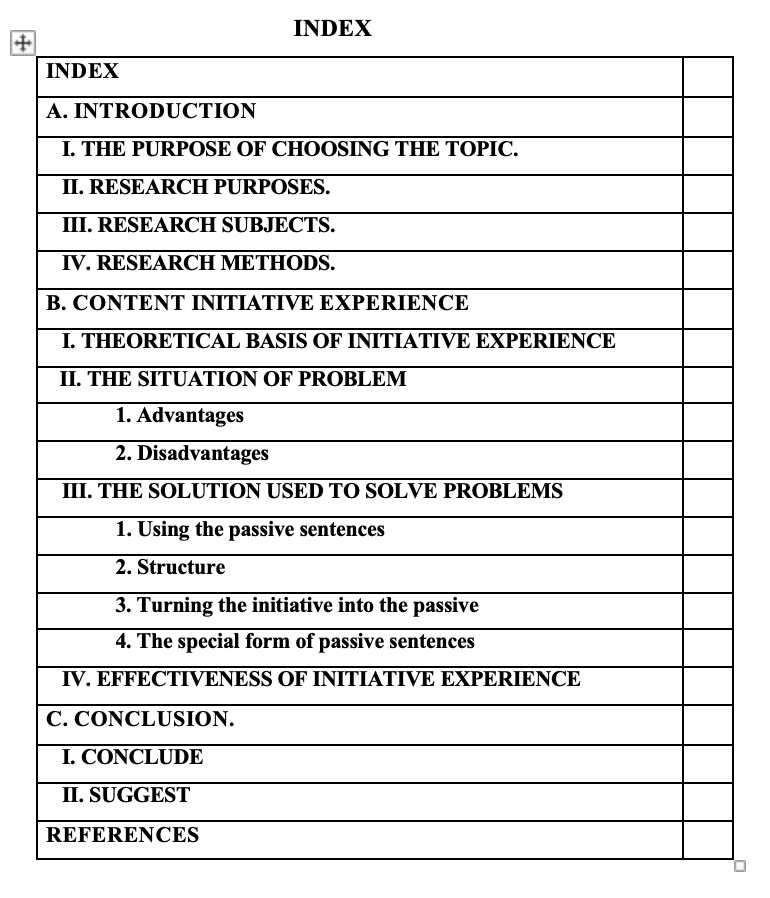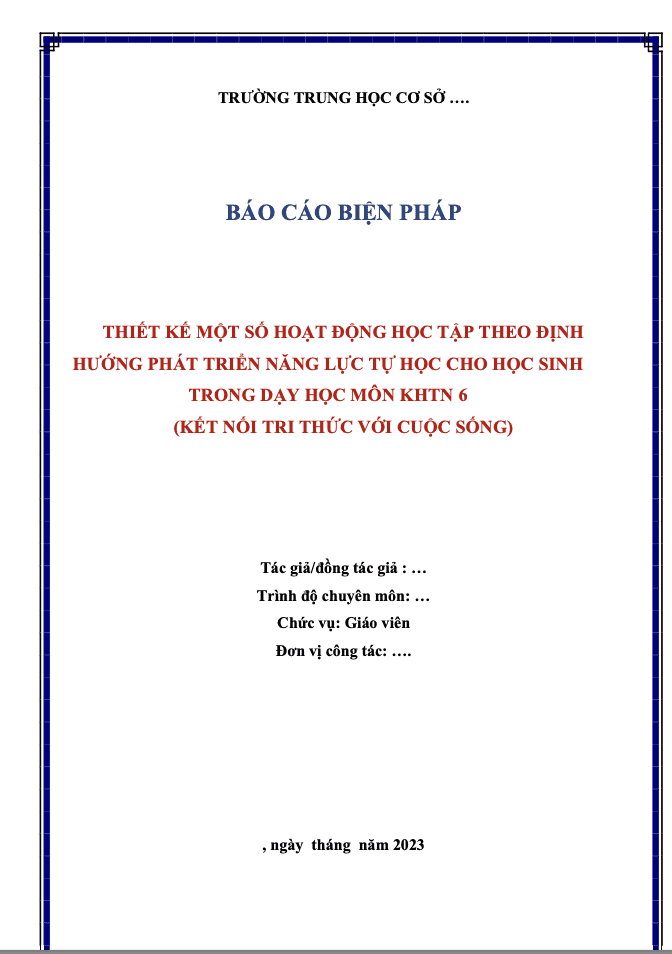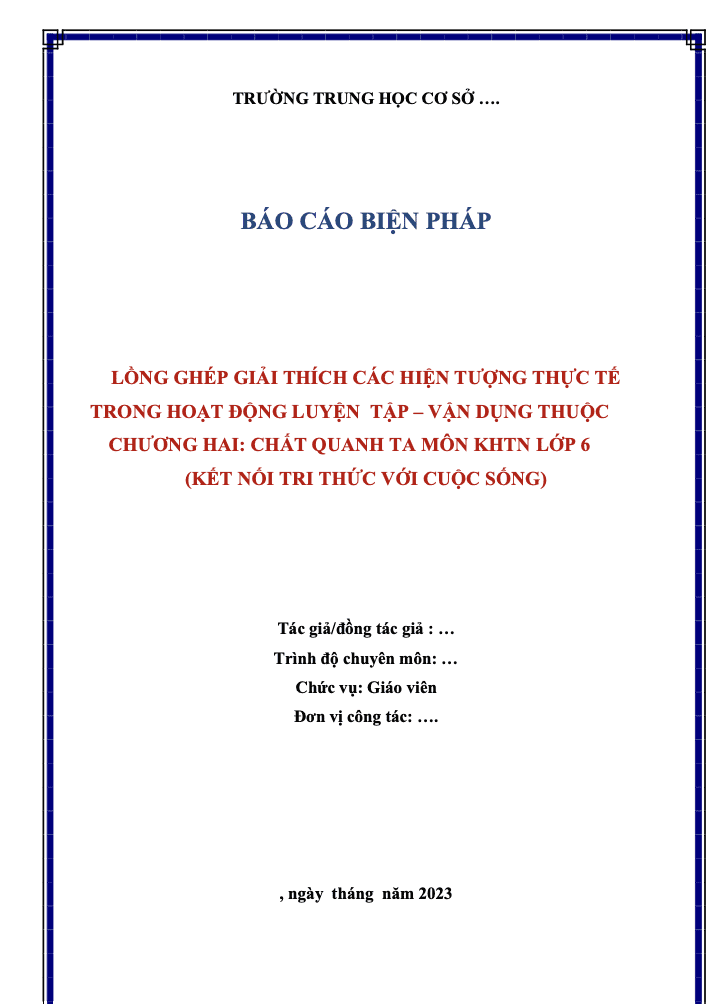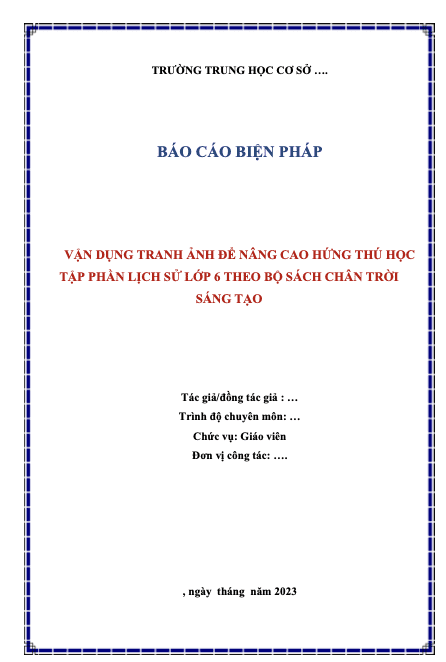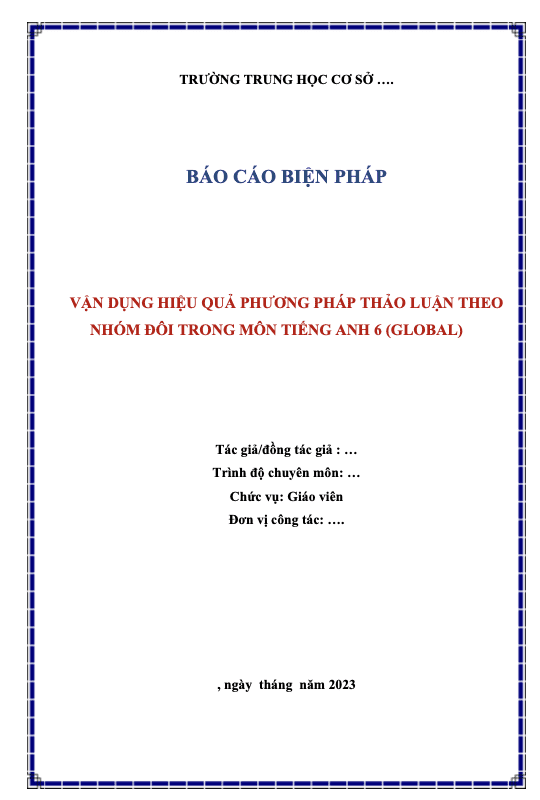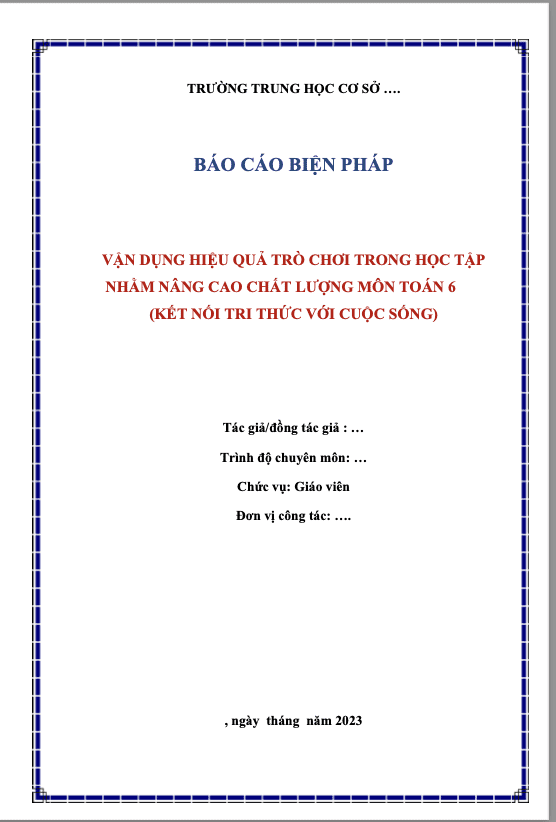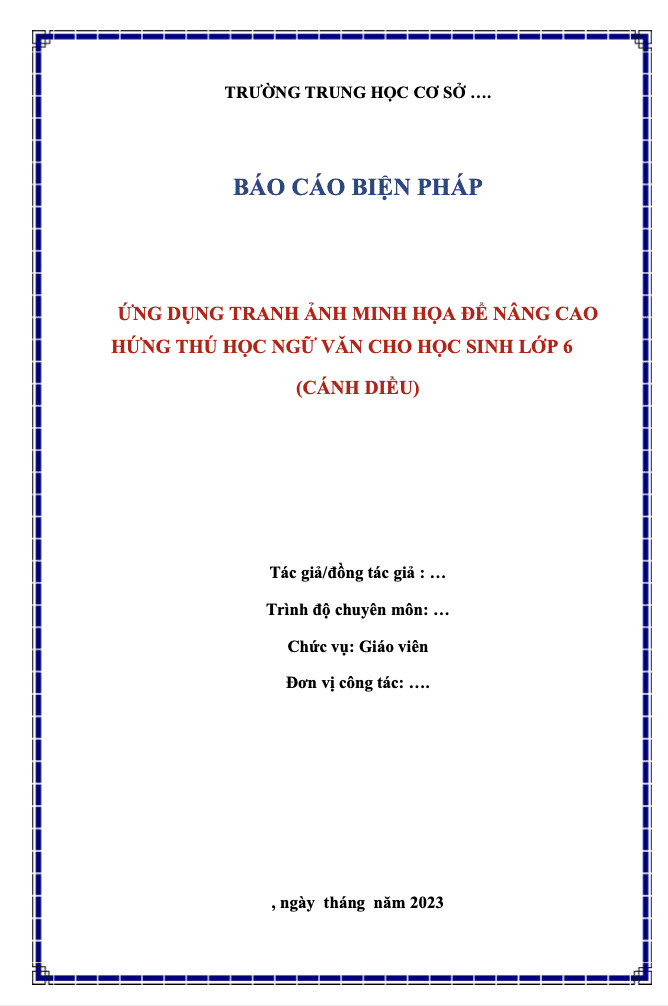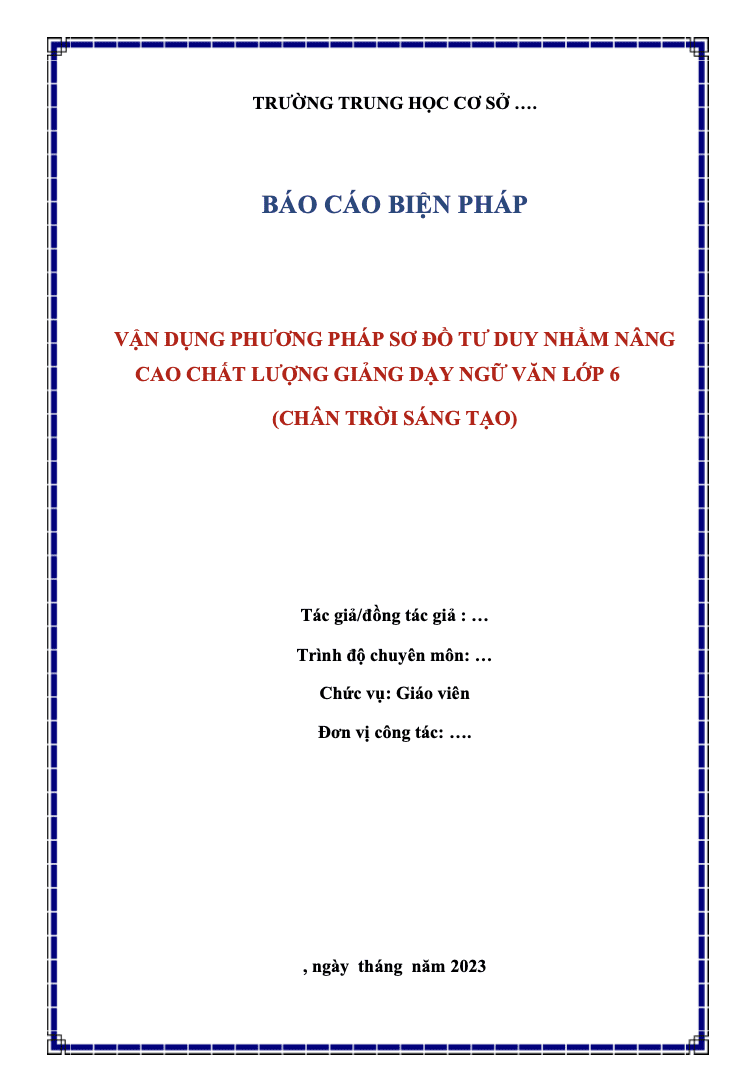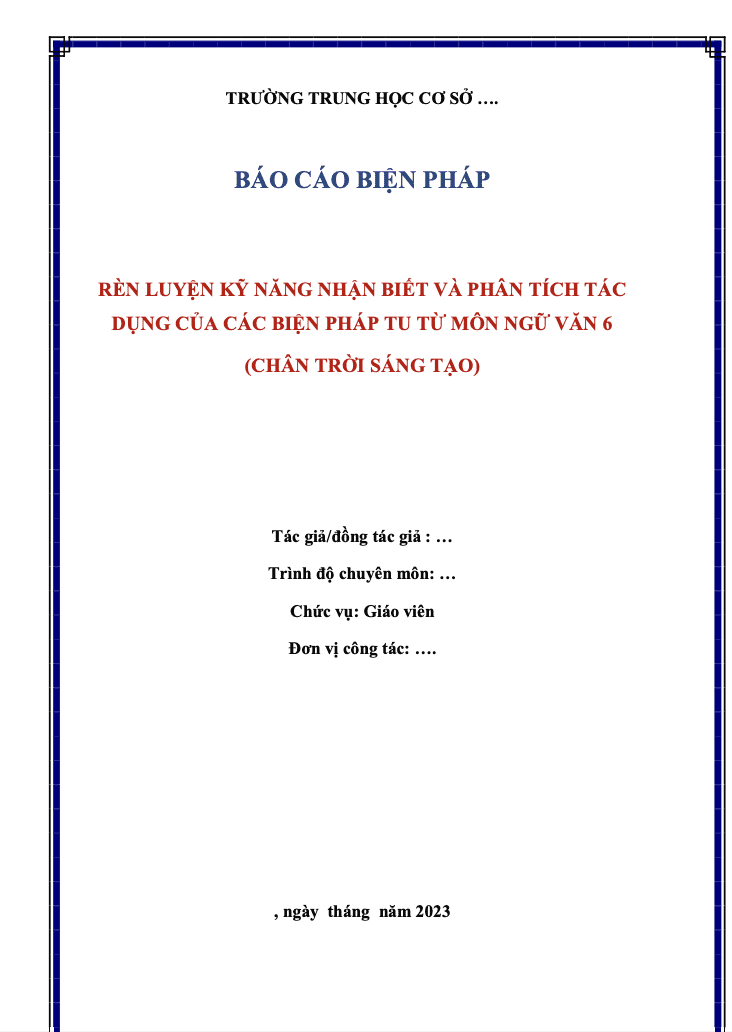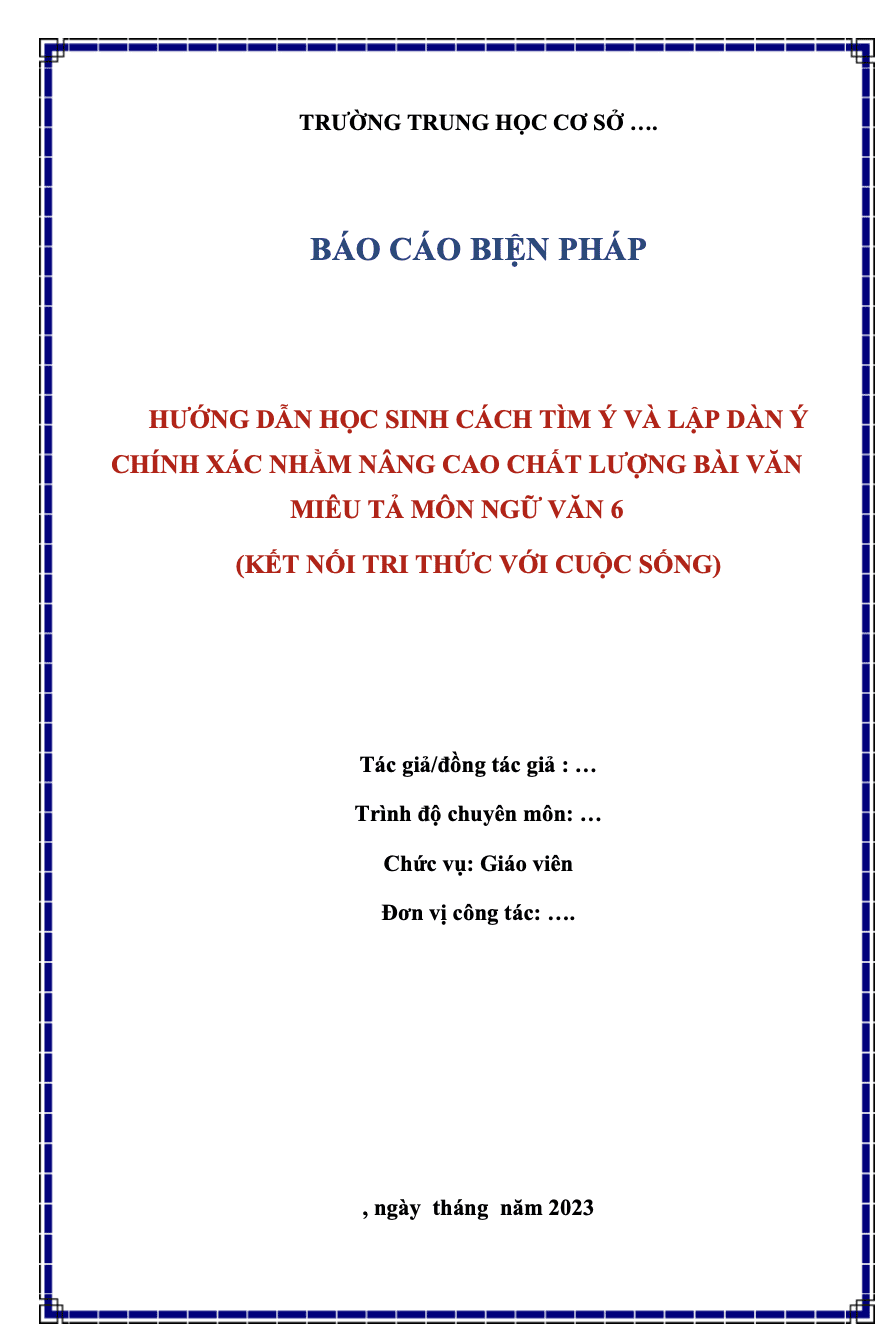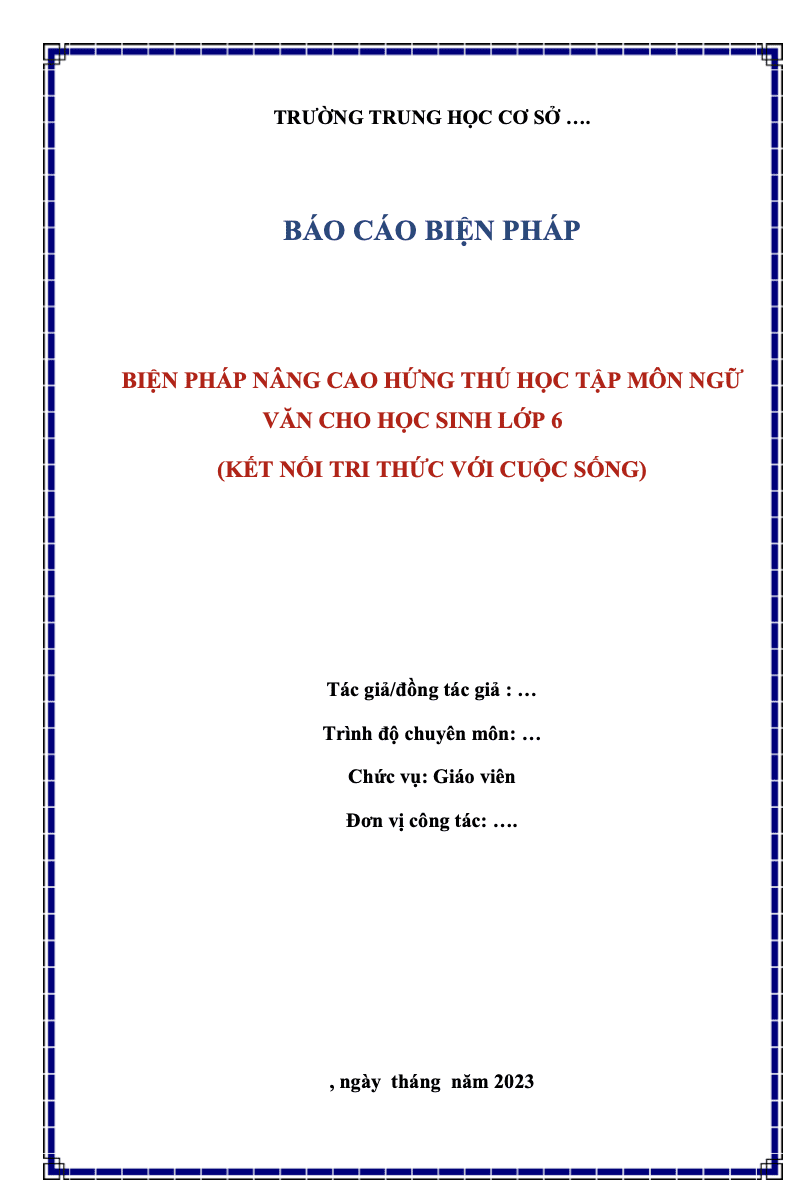SKKN Some experiences in teaching passive sentences for students in grades 8
- Mã tài liệu: BM8174 Copy
Giá:
| Cấp học: | THCS |
| Môn: | Tiếng anh |
| Lớp: | 8 |
| Bộ sách: | |
| Lượt xem: | 385 |
Sáng kiến kinh nghiệm “SKKN Some experiences in teaching passive sentences for students in grades 8” triển khai gồm các biện pháp nổi bật sau:
1. Using the passive sentences
2. Structure
3. Turning the initiative into the passive
4. The special form of passive sentences
Mô tả sản phẩm
INDEX
| INDEX | |
| A. INTRODUCTION | |
| I. THE PURPOSE OF CHOOSING THE TOPIC. | |
| II. RESEARCH PURPOSES. | |
| III. RESEARCH SUBJECTS. | |
| IV. RESEARCH METHODS. | |
| B. CONTENT INITIATIVE EXPERIENCE | |
| I. THEORETICAL BASIS OF INITIATIVE EXPERIENCE | |
| II. THE SITUATION OF PROBLEM | |
| 1. Advantages | |
| 2. Disadvantages | |
| III. THE SOLUTION USED TO SOLVE PROBLEMS | |
| 1. Using the passive sentences | |
| 2. Structure | |
| 3. Turning the initiative into the passive | |
| 4. The special form of passive sentences | |
| IV. EFFECTIVENESS OF INITIATIVE EXPERIENCE | |
| C. CONCLUSION. | |
| I. CONCLUDE | |
| II. SUGGEST | |
| REFERENCES |
- INTRODUCTION
English is the language used by most countries. It became the international language used to communicate between nations. I am an English teacher at a secondary school and I understand clearly methods of teaching English. With my teaching experience, I always learn and improve the quality of my teaching in English.
With those criterias, I chose this topic “Some experiences in teaching passive sentences for students in grades 8”. In the course of research, I believe there will be some errors, I hope to receive advice from my colleagues.
- I. THE PURPOSE OF CHOOSING THE TOPIC.
In English subject at the secondary school, passive sentence is also one of the important knowledge, students often have difficulties in doing exercises. If students want to do the passive sentences exercises well, they need to understand this form. But in class only forty percents students understand the content of this, so I research this topic.
- RESEARCH PURPOSE.
When I write this idea, I just wanted to contribute my part to help them understand better passive sentences.
III. RESEARCH SUBJECTS.
In my topic, I just focus on the theoretical part of the passive such as structured, how to use, how to switch from active to passive, several particularly in the passive,… and some writing assignments and exercise tests.
- RESEARCH METHODS.
- Research, income forms essay assignments, test of passive sentences and how to do homework, which can assess the qualifications and the knowledge of the students about the passive.
- Research based on observation methods: attending classes of colleagues.
- Research based on practice: teaching with the attendance of some colleagues then discuss to learn from each other
- Research based on survey methods: Teachers ask questions to check understanding the content of the student lesson.
- CONTENT INITIATIVE EXPERIENCE
- THEORETICAL BASIS OF INITIATIVE EXPERIENCE
When I was student in a secondary school, I learned about the passive sentences and had some difficulties. I wanted to know how to distinguish the types of sentences and other forms of exercise.
But in traditional teaching: teacher-centered, students only khow to follow and write down what the teacher says. So it becomes boring lesson, students are not able to think creatively in class. In the program of today’s textbooks to help students better understand and the difficulties in doing homework passive sentences.
- THE SITUATION OF THE PROBLEM.
- Advantages
1.1. On the part of teachers
– Have to access and use of new methods in teaching.
– Creativity, learn some appropriate teaching compatible with the content of the lecture.
– Teachers use modern equipment well such as computers, speakers, projectors,…
1.2. On the part of students
– The majority of school students are excellent students selected from schools in Ngoc Lac district.
– The majority of students prefer studying English, and spend much time studying.
- Disadvantages
Besides the above advantages, teachers and students exist back:
2.1. On the part of teachers
Teachers also use several methods that are not suitable with the form of the lesson, so students will have some difficulties in understanding the lesson.
2.2. On the part of students
Students do not pay attention to enlarge the vocabulary so vocabulary is very limited them. And some of them do not study and do not homework.
2.3. Teaching equipment
Equipment used for teaching English is limited. Some equipments is spoiled or outdated inconsistent with teaching.
III. THE SOLUTION USED TO SOLVE PROBLEMS.
- Using the passive sentences.
– When it is not necessary to mention acting agent ( because situations was too obvious or unimportant )
Eg: The road has been repaired.
– When we do not know or forget the people take action.
Eg: The money was stolen.
– When we ourselves are interested in action than the person do the action.
Eg: This book was published in Vietnam.
– When the subject of the sentences is subject not actively defined as: people, they, someone…
Eg: People say that he will win. [1].
→ It’s said that he will win.
– When the speaker does not want to mention all actions cause.
Eg: Smoking is not allowed here.
2. Structure
TÀI LIỆU LIÊN QUAN
200.000 ₫
- 5
- 552
- 1
- [product_views]
200.000 ₫
- 8
- 524
- 2
- [product_views]
200.000 ₫
- 0
- 458
- 3
- [product_views]
200.000 ₫
- 0
- 494
- 4
- [product_views]
200.000 ₫
- 8
- 415
- 5
- [product_views]
200.000 ₫
- 6
- 582
- 6
- [product_views]
200.000 ₫
- 6
- 539
- 7
- [product_views]
200.000 ₫
- 5
- 412
- 8
- [product_views]
200.000 ₫
- 3
- 572
- 9
- [product_views]
200.000 ₫
- 0
- 517
- 10
- [product_views]

